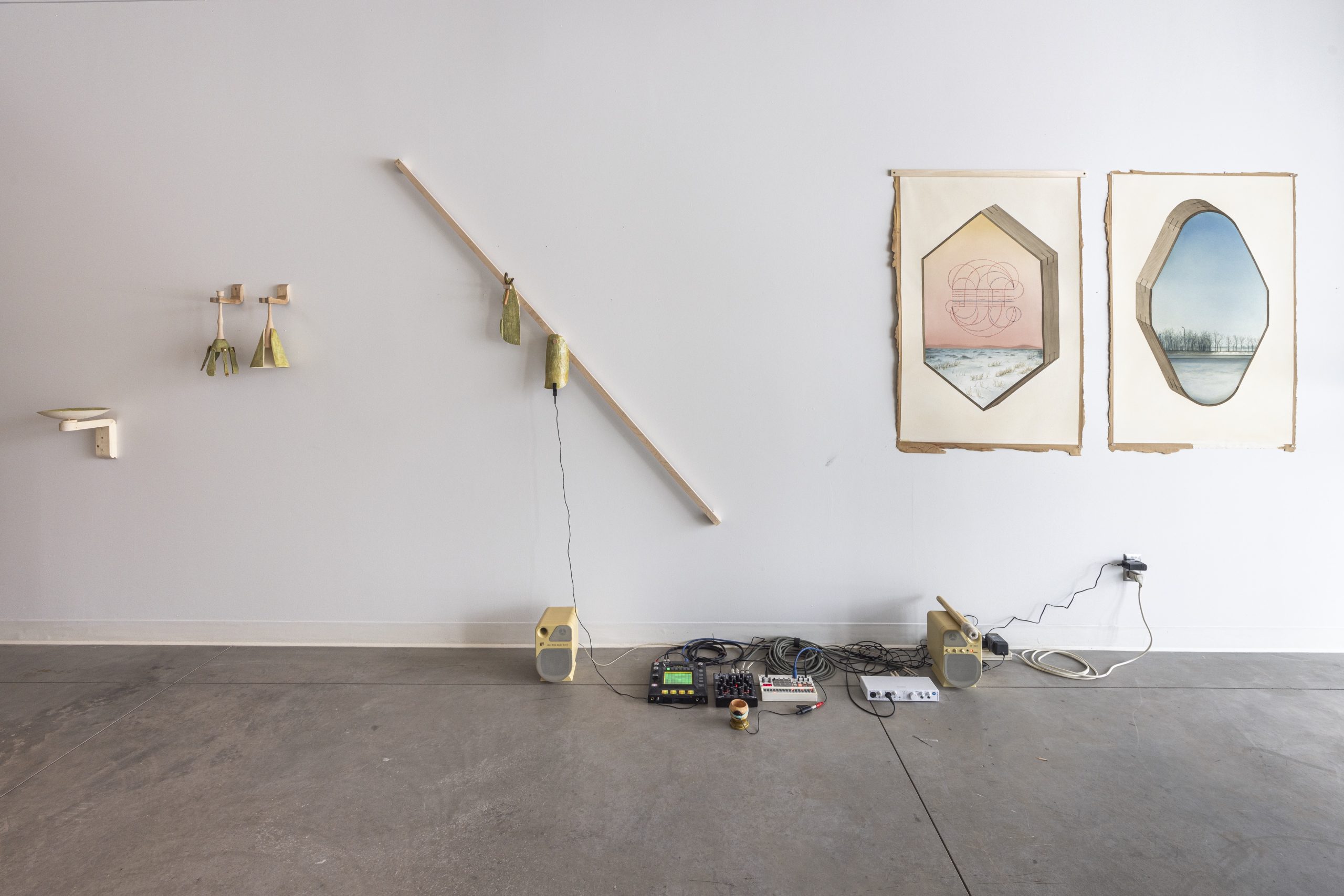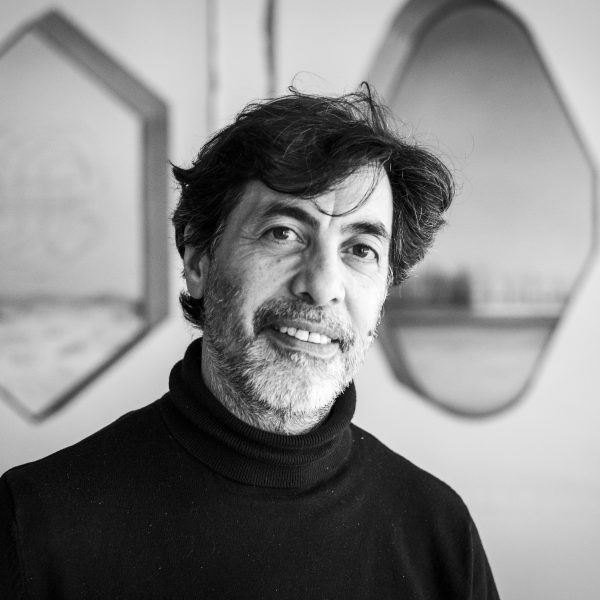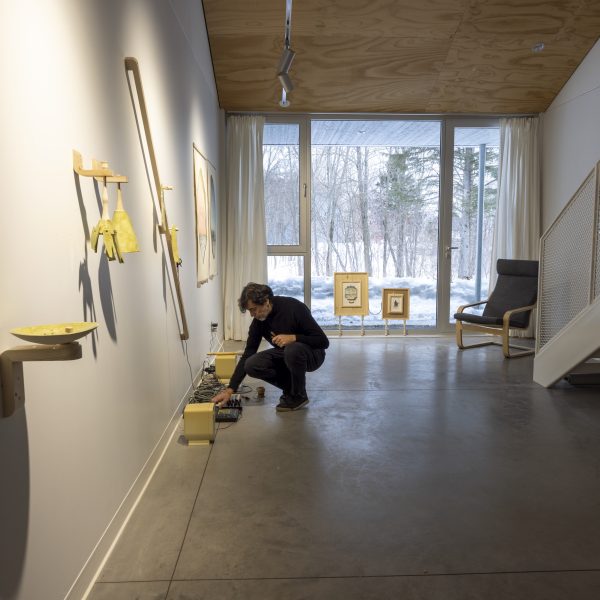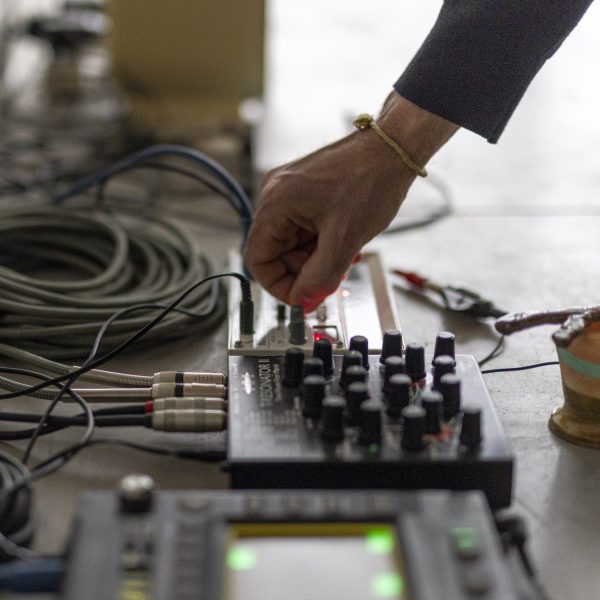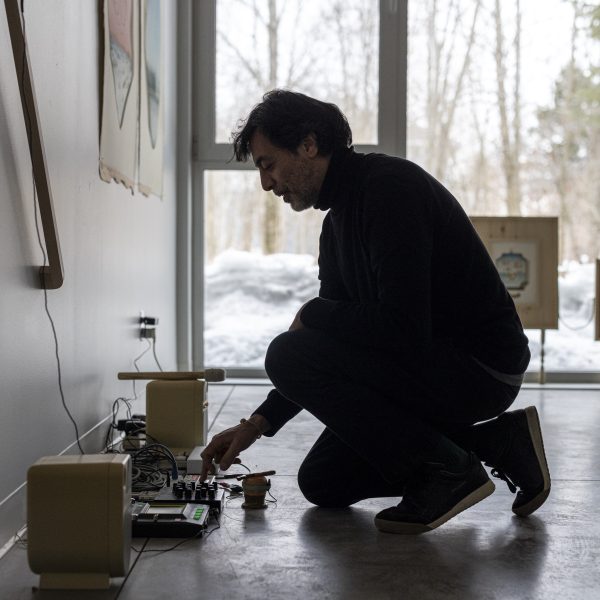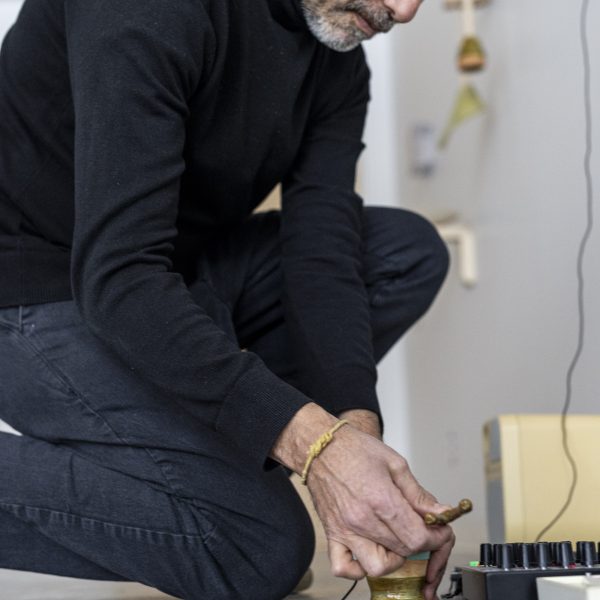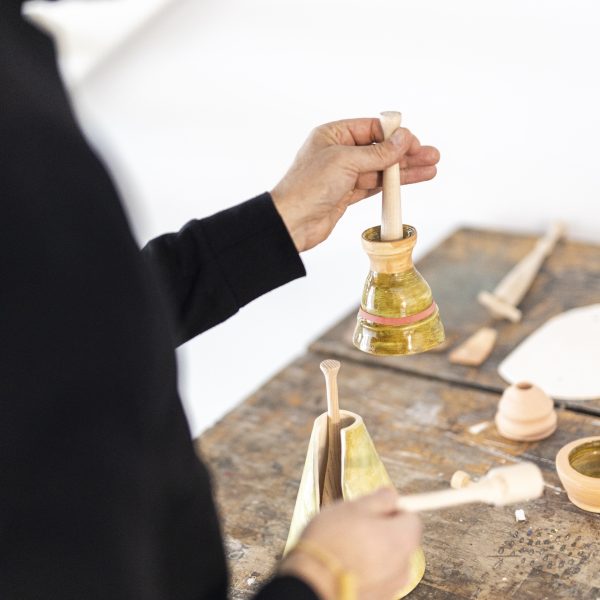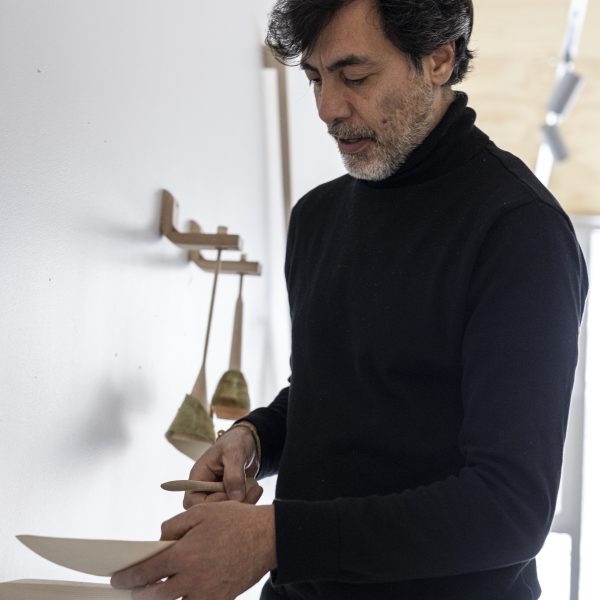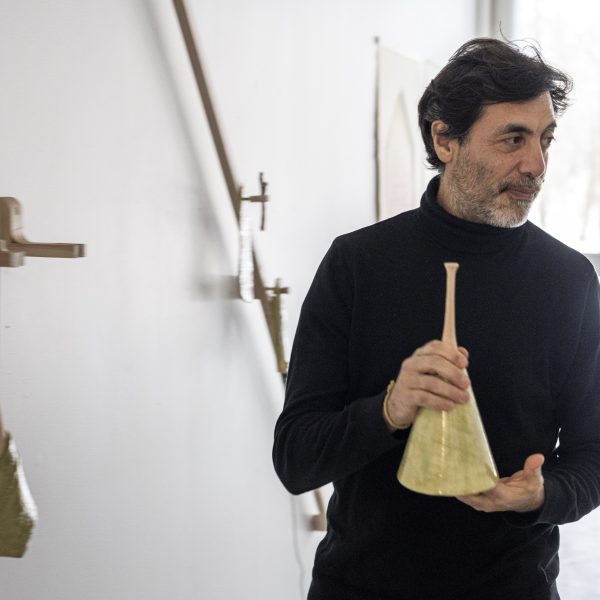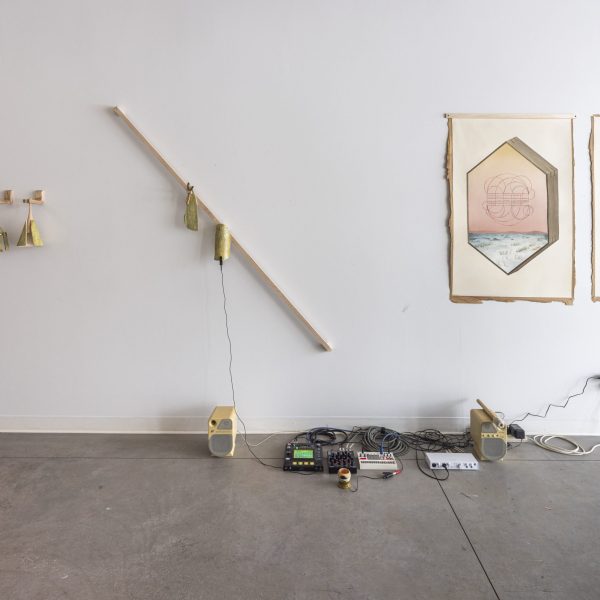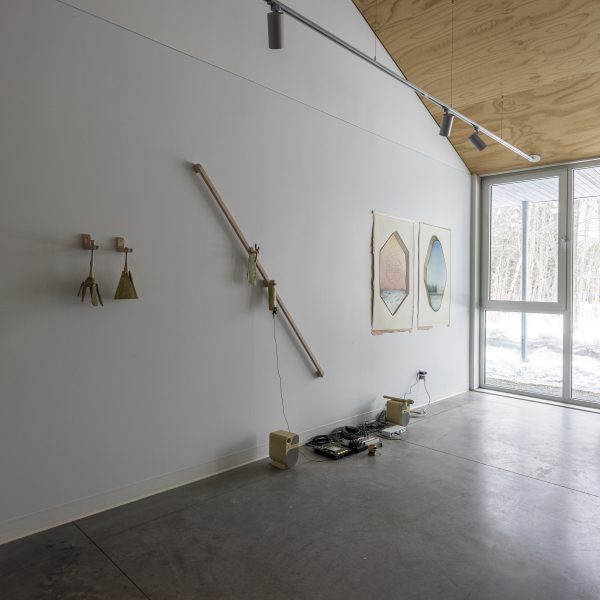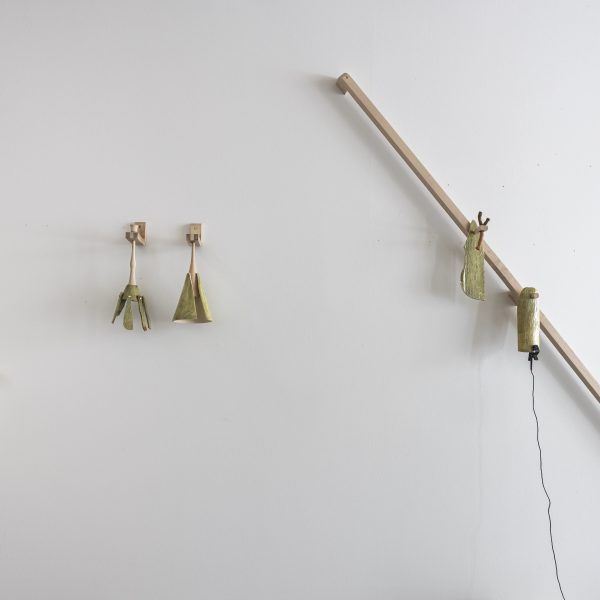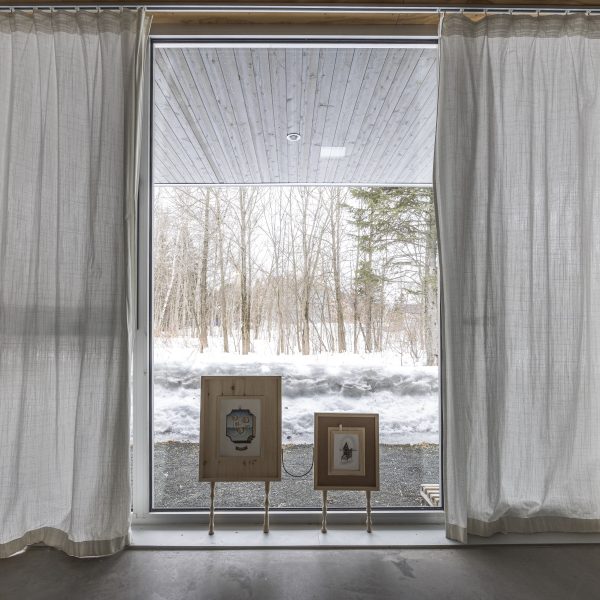Amadeo Azar
Testimony
Amadeo Azar’s studio is filled with delicate hand-made ceramic-and-wood instruments that feel organic and inviting to manipulate. Bell-like forms, finished in a greenish glaze with their handles turned on a wood lath, hang from the wall on custom-made rests. The ceramic components are modular and interchangeable in a way that signals the potential for these instruments to be made and remade using different parts.
During his time at Est-Nord-Est, Azar has spent a good deal of time thinking about the topography that connects his native Mar de Plata, a seaside city in Argentina; La Pampa, a nearby province; and the riverside scenery of Saint-Jean-Port-Joli in Québec. In a series of unbelievably detailed and engrossing watercolours that he has also created during his time in residency, these different landscapes come into harmony with each other. Like portals onto another world, Azar uses the luminescence, fluidity, and richness of watercolours to create environments in which light along the St. Lawrence River becomes a character and a presence.
One of the most touching works on display in Azar’s studio is a diptych: a watercolour depicting maple-sap collection on the left and one of a hand reaching out for a snowflake on the right. The paintings are in wooden frames with wood-turned feet, giving them an anthropomorphic quality. Linked by a piece of bent wood, the paintings look like they are holding hands. Describing this as an homage to the painting Padre e hijo contemplando la sombra de un dia (1962) by the surrealist Argentinian artist Roberto Aizenberg (1928–96), Azar speaks of his son back home in Argentina, whom he misses greatly. A reminder of the isolation of a residency such as this one, during which artists can produce intensely but often at a certain cost, this work by Azar encapsulates the familiar homesickness that comes over anyone who travels for their work.
Biography
Amadeo Azar is a visual and sound artist born in Mar del Plata (1972), based in Buenos Aires, Argentina. He has received a grant from the Pollock-Krasner Foundation and participated in the Open Session program at the Drawing Center in New York. In his work, he focuses on drawing and painting with watercolour to support his ideas, exploring all the possibilities of the technique and pushing it to its limits. This exploration allows him to interact with other fields, such as ceramics, photography, archives, and sound, creating a personal poetic system that can encompass different universes, where he creates immersive spaces that become an active experience.
Discover
Newsletter
Keep up to date with the latest news!
